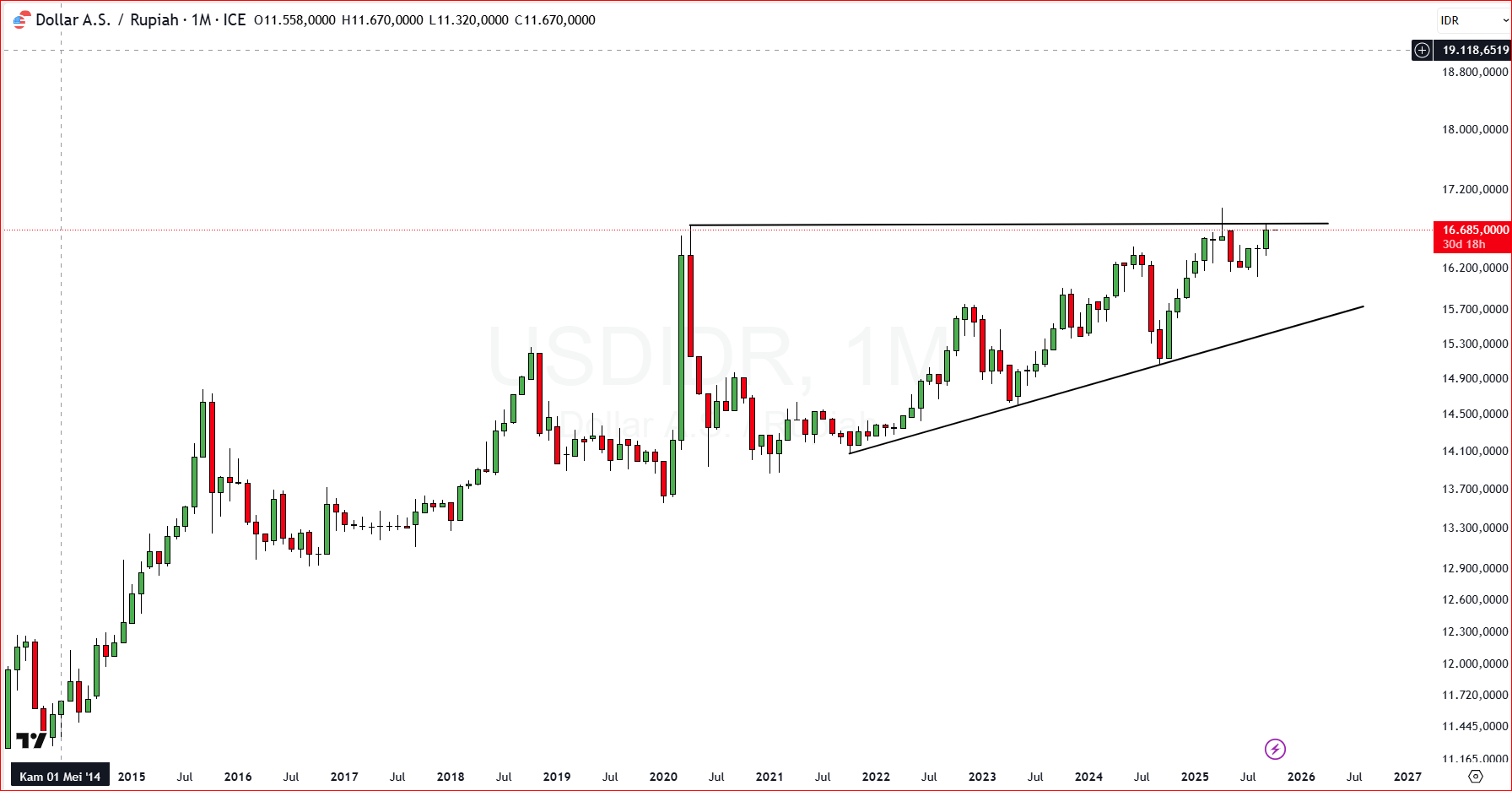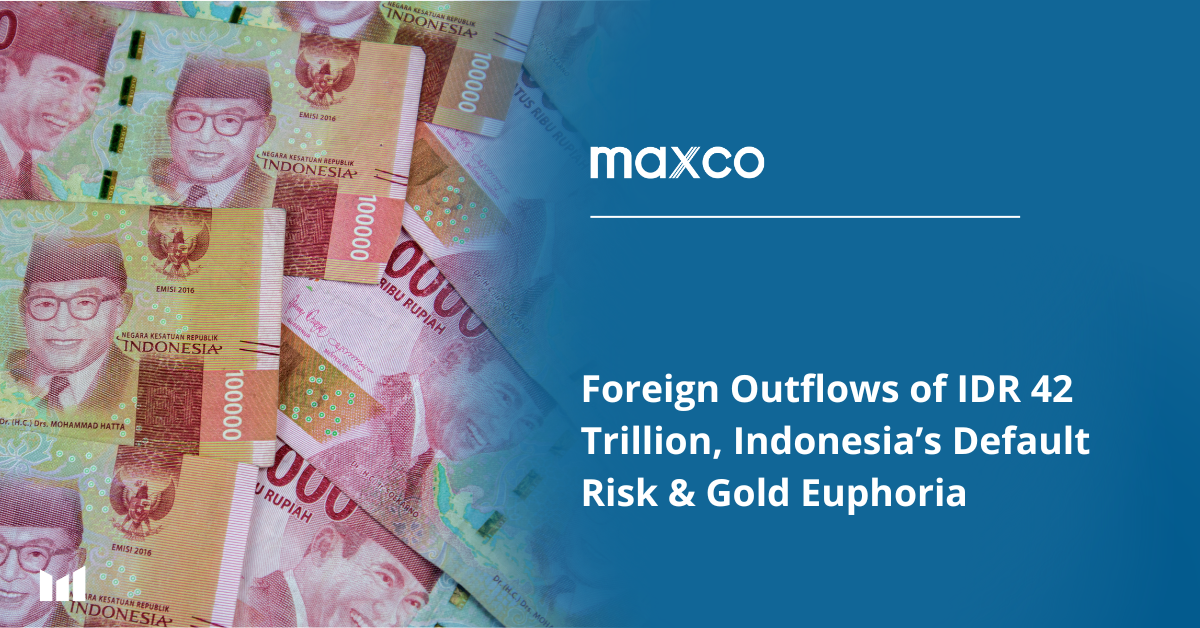Rupiah on the Brink, U.S. Dollar Growing Stronger
Keep your eyes on your trading screen—because the Rupiah’s movement right now is more than just numbers; it reflects the tug-of-war between global sentiment and domestic economic resilience.

In recent days, the USD/IDR exchange rate has climbed to the Rp16,700 range, even briefly breaking above 16,740 per U.S. dollar. This marks a new wave of pressure on the Rupiah, despite Bank Indonesia (BI) repeatedly affirming its readiness to use “all instruments” to stabilize the foreign exchange market.
External Pressure: The U.S. Dollar Reigns Supreme
On the global front, the momentum behind U.S. dollar strength has grown stronger. Investors continue to monitor U.S. labor and inflation data, which could extend the Fed’s hawkish stance. High U.S. Treasury yields are also driving capital outflows from emerging markets, including Indonesia.
In other words, global markets are in “flight-to-safety” mode—seeking safe assets, and unfortunately, the Rupiah is not one of them.
Domestic Fundamentals: Resilience Being Tested
Domestically, Indonesia’s economic fundamentals remain relatively solid. Inflation is under control, foreign reserves remain ample at over $140 billion, and the current account deficit is not alarming. However, external factors have been too dominant, making domestic strengths appear insufficient.
Bank Indonesia continues to make efforts by closely monitoring the market and intervening to stabilize the Rupiah. Meanwhile, Finance Minister Purbaya’s policies are also expected to provide positive momentum for the domestic economy.
Still, Indonesia’s financial markets have once again been shaken by capital outflows amounting to IDR 42 trillion in the recent period. This surge in outflows has pressured the Rupiah, triggered bond sell-offs, and increased instability in the stock market.
As a consequence, Indonesia’s default risk has risen sharply, reflecting declining investor confidence in domestic economic prospects. This situation stems from a mix of global factors, such as persistently high global interest rates and worldwide economic uncertainty, combined with domestic weaknesses seen as less competitive.
If pressures persist, the government and BI may need to respond with tighter liquidity measures, fiscal discipline, and stronger economic fundamentals to restore market confidence.
Technicals: Psychological Levels in Focus
Technically, USD/IDR is now trading within the Rp16,600 – Rp16,900 range.
- Key Support: Rp16,600 – Rp16,650
- Critical Resistance: Rp16,900, with a clear path toward Rp17,000 if pressure continues
If the Rupiah fails to stay below Rp16,900, the market may test the psychological level of Rp17,000.
Short-Term Outlook: Two Paths for the Rupiah
- Bullish Rupiah (Bearish USD): Weak U.S. data, dovish Fed → Rupiah may strengthen back to 16,500–16,600.
- Bearish Rupiah (Bullish USD): Strong U.S. data, hawkish Fed → Rupiah risks falling toward 16,900–17,100.
- Consolidation Scenario: If BI intervenes aggressively and global sentiment calms → Rupiah may remain range-bound at 16,600–16,900.
Overall, domestic fundamentals still offer support, but the direction of the Rupiah is largely dictated by U.S. monetary policy and global investor sentiment. The 16,900–17,000 zone will be the key psychological battleground: will the Rupiah hold, or concede to the U.S. dollar’s dominance?
Foreign Outflows of IDR 42 Trillion, Indonesia’s Default Risk & Gold Euphoria
The outflow of IDR 42 trillion from Indonesia’s markets has shaken domestic financial stability. The Rupiah is under pressure, bonds are being sold off heavily, and Indonesia’s default risk has surged. Global investors are clearly growing more cautious about Indonesia’s economic outlook.
On the other hand, this situation has become a “fuel” for gold demand. As investors exit risky assets in emerging markets, gold once again emerges as a safe haven. Rising credit risk in emerging markets, including Indonesia, often drives global investors to increase their gold holdings as a hedge against market volatility and currency uncertainty.
With mounting default fears and Rupiah pressure, gold has the potential to enjoy a new bullish momentum, both in international markets and in the form of bullion that is increasingly sought after by domestic investors.
—Ade Yunus
Global Market Strategies
